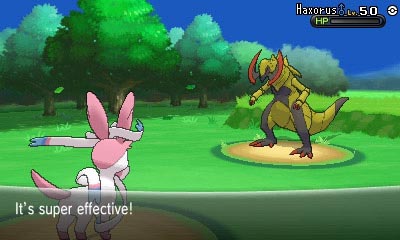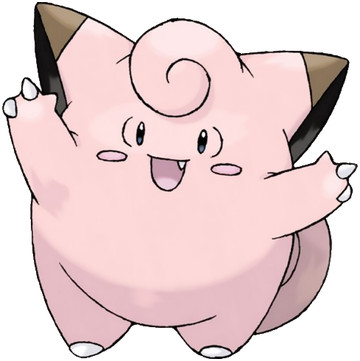Then: Pokémon, in 3D, with lots of cool new features and moves and everything. All pretty. Welp.
So, I picked up a 3DS XL, and Y version, and I think my housemates think I'm dead now? Or at least the part of me that isn't playing Pokémon. After a little over a week of it, I'd like to weigh in with my impressions.
 |
| TL; DR: It's super effective! |
First: It's hard to oversell how pretty the game is. For those of us who patiently waited through five generations of still or mostly-still images of our dueling monsters, it's pretty cool to see them coming to life in battles. It's no longer just "oh, that's a neat design"; the Pokémon are actually quite cool looking. As my fiancée has been saying over and over, "It's the way I've always wanted to play Pokémon," from the spectacular (in the most literal sense of the word) battles to the ability to, y'know, walk diagonally. It feels like it could be a console game.
 |
| Plus you get to rollerblade around everywhere, which is sweet. |
 |
| It seems that most - but not all - pokemon from Gen 1 are now Fairy Type. Maybe they're rolling it out in phases, and eventually all 700-whatever will be Fairy-Type? sure looks that way |
To me, the best changes to the game are how accessible the global community has become. In past iterations of the game, it's always felt as though other players were kind of tricky to come by - especially as my peers grew up and I didn't. The Player Search System lets you interact with friends and strangers alike, allowing easy trades and letting you give little boosts to other players, like earning more money or catching Pokémon easier. My personal favorite feature is the Wonder Trade system, which lets you trade a Pokémon for a another completely random Pokémon that someone else is Wonder Trading. Obviously you get a bunch of level 3 Caterpies this way, but sometimes you get cool stuff - I've gotten a couple of starters and other rare Pokémon this way, alongside some that I simply wasn't far enough in the game to get. When Pokémon start coming in from Japan or Australia or France, it really gives you a sense of how huge the game is globally - and when you get something valuable or rare, it feels like a generous gesture from a complete stranger.
 |
| This is how I feel, all of the time. |
To me, Pokémon X and Y feel somewhat like the advent of Netflix streaming years back (I swear to God I'm going somewhere with this). When that happened, it felt like the product had been engineered for just such an occurrence: the framework had been established, and once the technology - bandwith and storage - became widespread enough, it was easy for them to transition into a streaming system that made a lot of sense for most customers. With X/Y, it feels as though everything is in place: the player base, the community, the IP, and now they've connected all those players and made the whole experience feel a lot more friendly. You can go to Reddit for news on the game, or to find people to swap friend codes with for trading or battles, and it's easy to add them into your game. The game rewards this behavior by giving you access to some unique Pokémon for each new friend code you add, and as I said you and your friends can give each other minor boosts that are a nice perk.
If you strongly dislike the games in general this may not be the one to sway you, but if you're a fan who skipped or was disappointed by recent entries, this is definitely worth looking into. To my mind, each iteration of the games has improved on the formula, with tighter gameplay and finer graphics, and the change up to X and Y is probably the most dramatic yet.
For my part I ain't even beat the Elite Four yet and then I still got hella Scythers to breed so I might weigh in on this again next week. Meanwhile, let's get some friend codes goin', I got some good stuff to trade.
Oh, and I leave you with this from my picture search for the article:
 |
| Whyyyy. ;__; |





